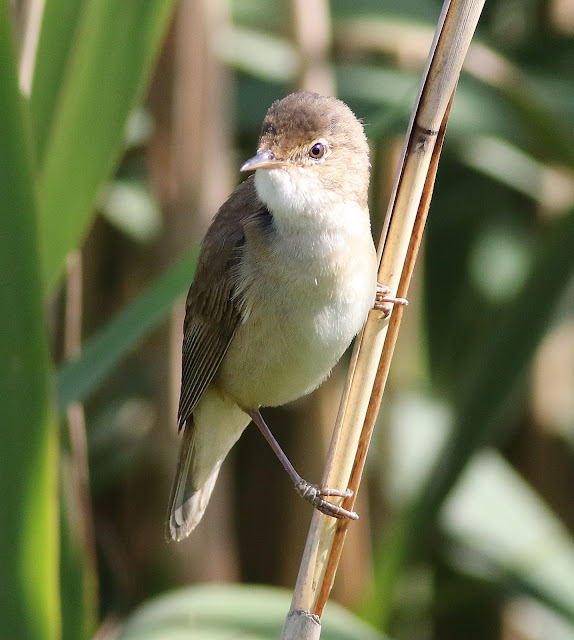It was forecast to be in the 30s so not a good day to be out photgraphing birds, but it was the best day in the 10-day forecast so time for a visit to Rainham Marshes. Might get some photos of Acrocephalus warblers, in this case Reed and Sedge warblers, but I also packed my macro lens should I have to resort to photographing insects.
In the event I did use the macro lens, not for insects but for the many flowers on show.
 |
| Creeping Cinquefoil |
 |
| Chicory |
 |
| Goat's Rue |
 |
| Mallow |
 |
| Tufted Vetch |
 |
| Yarrow |
It was so hot that even the Magpies were panting and the Marsh Frogs were seeking a patch of shade in the reeds.
Around the Dragonfly Pool a number of Bearded Tits were flitting around but mostly flying long distances and never posing, part from this rather bedraggled male which kept hidden in the reeds.
On the warbler front this male Whitethroat suddenly appeared out of nowhere with a beakful of food, but disappeared just as quickly.
But now down to the business of the day, the Acrocephalus warblers, which at Rainham Marshes translates to Sedge and Reed Warblers. The only photographic Sedge Warbler was this bird which was singing its heart out, albeit partially obscured by the rose bush. However, 10/10 for effort.
But the star of the show today was this Reed Warbler which was posing nicely in the mustard by the MDZ hide. Didn't it do well?

























































